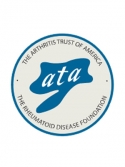WhitePillsSpillingOutBottle.jpg

Photo by Steve Buissinne / Pixabay License
Why are some doctors and patients speaking & shouting out for Chelation therapy? A hearing held in Tampa by a committee of the Florida Board of Medicine attracted patients and doctors from Florida and across the country. A mix-up in scheduled time provoked the president of the Pro-Chelation Alliance for Medical Freedom to accuse the committee of being a “Kangaroo Court.”
What is so special about Chelation therapy that has been used and promoted for over 50 years, but never clinically tested in chronic diseases? Another similar form of chelation therapy that has been used and promoted for over 50 years is treatment of arthritis with tetracycline antibiotics. The tetracyclines were recently clinically tested and found to be safe and effective in rheumatoid arthritis and the inhibition of metallic enzymes such as collagenase that destroys tissue collagen.
Chelation is a chemical term given to molecules that combine or complex with metals such as lead, mercury, copper, iron, calcium, etc. The term is taken from ‘chela’ the pincer-like claws of crabs. Such agents hold metals making them ineffective by limiting their availability for metabolic activity. One such chelating agent that is widely used is a synthetic amino acid, ethylene diamine tetra-acetic acid, or EDTA that chelates the toxic metals such as lead & mercury, as well as calcium and the other essential trace metals. As chelating agents the other amino acids (protein fragments), vitamins A, C and E, are also used in chelation therapy as antioxidants.
Aspirin and other anti-inflammatory (NSAIDS) chelates convey a variety of benefits to multiple organ systems. Most notably by combining with Calcium as an anticoagulant improves the cardiovascular and macular degeneration. By reducing arterial plaque formation with an increased blood supply relieves patients from angina, claudication, and dizziness. However with long term and extensive use the benefits of chelates are lost with the nonspecific removal and reduction of the essential trace metals. Chelation therapy can be a double edge sword like steroid therapy that can help or put the patients at greater risk with the temporary control of symptoms and not the primary causes. The reduction and elimination of arterial plaque formation by dietary and chelation means can have life saving benefits but does not, eliminate the suspected infectious and persisting causes. Treatment of vascular disorders of microbial causes such as mycoplasmas and chlamydia with the chelating tetracycline antibiotics can provide a multiple action affect.
Whether mycoplasmas or other microbes are the persistent sensitizing pathogens in collagen vascular disorders remains to be demonstrated. The primary concern is a safer and more effective treatment of the toxic forms of therapy that impose a greater danger and economic burden.
The tetracyclines are potent chelating (complexing) medications and as such have been found to act as anti-inflammatory, immunosuppressive, and anti-metallic enzymes as well as antimicrobial. When tetracyclines complex with copper they become active antioxidants and anti-inflammatory agents (electron scavengers) by neutralizing the damaging oxygen free radicals produced by the activated leucocytes. By combining with the copper, zinc, iron and other trace metal elements in enzymes such as collagenase, tetracyclines can inhibit the enzymatic destruction of tissues. Consequently the mode of tetracycline or chelate administration, intravenous or oral, could have a pronounced effect on their complexed state and thus their reactivity.
Prescribing some medications “between meals” or with meals is an attempt to provide optimum conditions for the utilization of each drug. Even between meals the gastro-intestinal tract contents provide a much greater diversification of chemicals and acidity than the blood. Thus when tolerable the more direct intravenous administration of tetracyclines and other chelating drugs will be more constant and effective than oral medication. The intermittent administration or pulse doses, 2-3/week rather than daily is more effective by giving the tissues time to normalize.
The beneficial effects of tetracyclines and other chelating agents such as EDTA, aspirin, and vitamins C, E, or A, are attributed to their metal complex and their resulting multiple actions, including antimicrobial. The administration of multiple acting chelating drugs could enhance or inhibit their activity and effectiveness depending upon their relative affinity. For example EDTA with a greater affinity for Calcium than tetracyclines could have a greater anticoagulant action. On the other hand tetracycline’s greater affinity for nucleic acids and lipids than most chelates results in a greater inhibition of protein synthesis and microbial growth. It is of interest to note that for many years the combination of Vitamin E and Selenium, a metal chelate, was a favorite arthritis medication used by veterinarians. Perhaps Bayer’s plain aspirin was touted as faster acting because it was not prechelated and neutralized with less effective metals.
Although not accepted clinically perhaps the preformed copper-aspirinate would be more effective in the control of inflammation and the preformed copper-tetracyclinate would control the collagen vascular disorders of microbial origin. In contrast the chelate D-penicillamine medication used to chelate copper and treat rheumatoid arthritis was found to inhibit mycoplasma growth when complexed with copper. Another aspect of chelation to consider is the potential adverse or beneficial affects of two or more chelating medications administered simultaneously. Excessive use of the EDTA or tetracycline chelates could inhibit the copper/zinc super oxide dismutase enzyme that protects against the tissue destruction induced by oxygen free-radicals.
Hopefully in the near future patients and doctors will be shouting out for the safe and effective antibiotic chelates that will help to eliminate not only the broad symptoms but also the microbial cause.
By Harold W. Clark, Ph.D. (Portions taken from the book Why Arthritis? Searching for the Cause and the Cure of Rheumatoid Disease by Harold W. Clark. Ph.D.) Originally published by The Arthritis Trust of America.
The Rheumatoid Disease Foundation / The Arthritis Trust of America was dissolved in 2020 and all website content was transferred to the Foundation for Alternative and Integrative Medicine.


